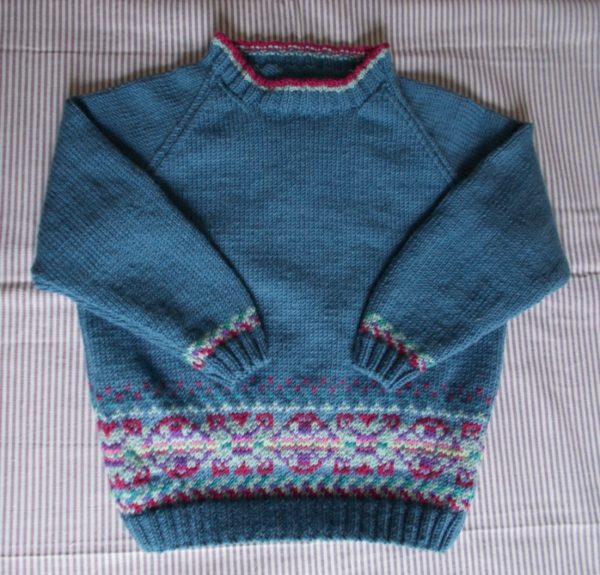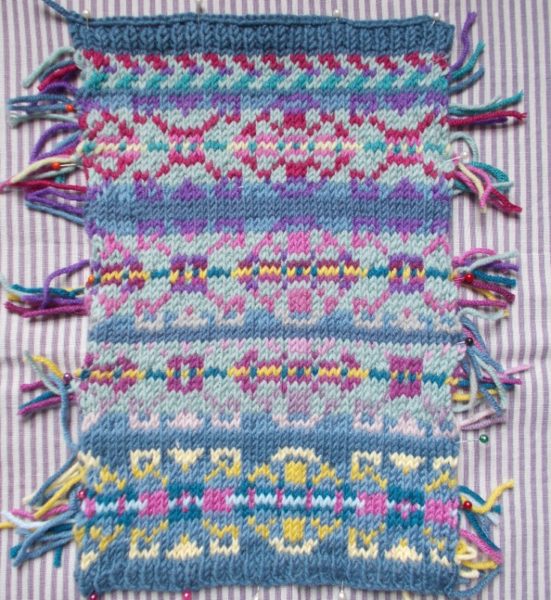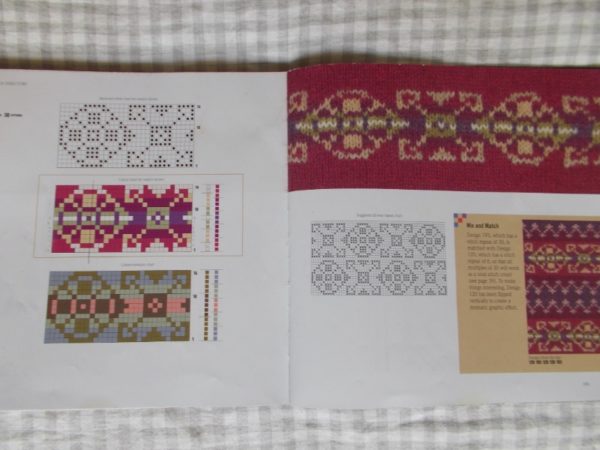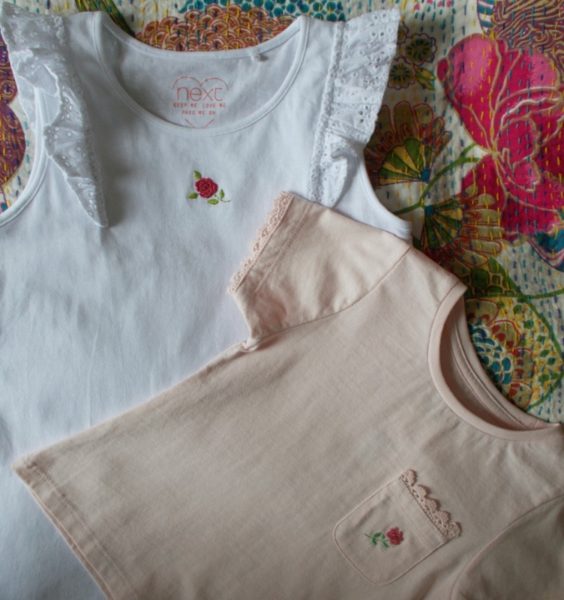
T shirts with embroidered roses hand embroidered by Mary Addison)
A sudden turn in the weather has produced warmth and from time to time even sun, so this week, like the Lady of Shalott, I sat back in my seat, stretched and turned away from my sewing … then, unlike the Lady of Shalott, I went out to do a bit of gardening. Out went the tulips we’d so enjoyed and into the zinc planters went geraniums. We’re away most of next week (with the U3A on a short tour of the best of Yorkshire churches) so if the fine weather continues as promised, the geraniums should cope with no watering and even look good for our return. To please the bees, for whom showy geraniums provide no nourishment (and to salve my conscience) I’ve also filled one terracotta pot with marguerite daisies and another with lavender. The foxglove that self seeds every year has come up again and already the chives are producing flower heads as I keep forgetting to add them to my salads. Fortunately our next door neighbours have a spectacular wisteria which rambles round from their garden’s back wall to generously cascade over the fence between us. Such a large wisteria plus the honeysuckle with which it intertwines, should definitely add to the happiness of bees and butterflies. Unfortunately, the wet and windy weather of the last few weeks has swept a lot of the blossom away but perhaps more will come to replace it.
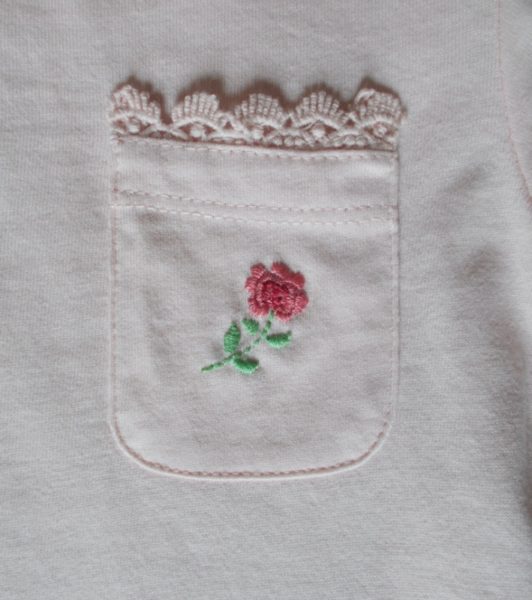
Rose pocket for a 1 year old (hand embroidered by Mary Addison)
Over the last year, while stitching and knitting away largely in blissful solitude, I’ve found diversion in podcasts and videos put online by the most innovative of museum curators and art journalists. As restrictions end and people go back to their everyday jobs these are coming to a full stop, so I want to celebrate the ones that have brought me joy. My favourite art talks are Cocktails with a Curator, from the Frick Collection in New York. These have been largely shouldered by the excellent Xavier Salomon wonderfully supported by the equally impressive and delightful Aimee Ng. Both talk fluently, fluidly and knowledgeably about a chosen exhibit from the museum and accompany their narrative with pictures of art both from their own museum and from collections across the world. An appropriate cocktail introduces each talk but the speaker is usually far too taken up with the subject matter to do anything other than to take one sip of the enticing drink at the beginning of the twenty minutes talk which slips by rapidly in their engrossing company. And it’s not just paintings and sculpture. The alchemical origins of porcelain at Meissen are arresting, unexpected and enthralling – do read Janet Gleesen’s The Arcanum of 1998, a page turning eye opener about a subject you probably didn’t know you wanted to know more about. (The NY Times review is a good synopsis of the book though not as enthusiastic as I am about it). Lacking opportunity or inclination to read Gleeson’s book, listen to Xavier Solomon in 2 talks as he opens up the phenomenon that is Meissen via the exhibits in The Frick (one of the world’s finest Meissen collections in private hands). Both curators know their subjects back to front and inside out. My husband, raised in Suffolk, was very impressed that Aimee pronounced John Constable’s beloved River Stour properly. There are several Stours. The Suffolk one is Stour as in store rather than Stour as in our (Worcestershire river) or Stour as in mower (Oxfordshire river) (Perhaps!) She gets Constable absolutely right too.
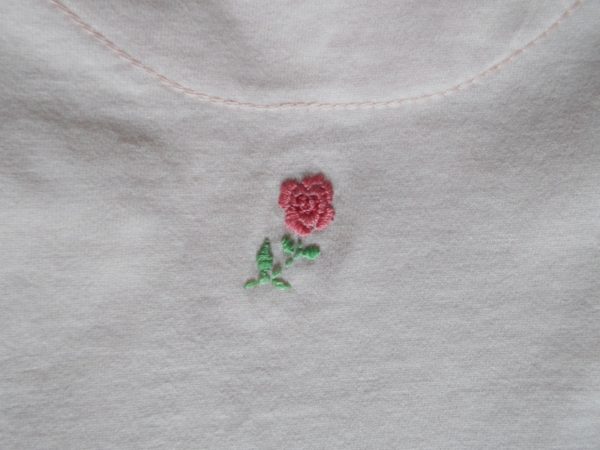
Little rose on back of T shirt (hand embroidered by Mary Addison)
Xavier and Aimee also host Travels with a Curator in which they virtually visit mainly European destinations with connections to the Frick’s exhibits. For instance, Aimee Ng takes a walk through St. James’s Park in London, exploring it as the backdrop for Thomas Gainsborough’s “Mall in St. James’s Park,” (painted about 1783 for George III, now in the Frick). In another Xavier takes us to the Château de Chantilly, one of his favourite places in France. Like the Frick, Chantilly began as an opulent residence and now houses a fine collections of European paintings in France as well as the world-famous illuminated manuscript “Très Riches Heures du Duc de Berry.” Mention of Chantilly brought back distant and not so pleasant memories of my only visit to the town as wardrobe mistress to The Clerkes of Oxenford who, having performed The Play of Daniel in Beauvais Cathedral were invited to a civic reception in Chantilly town hall. All very lavish, splendid and rather wonderful but somewhat undermined by the food sickness that worked its way through our company on the bus home and which found us ending our journey somewhat precipitously in Maidstone Accident and Emergency!
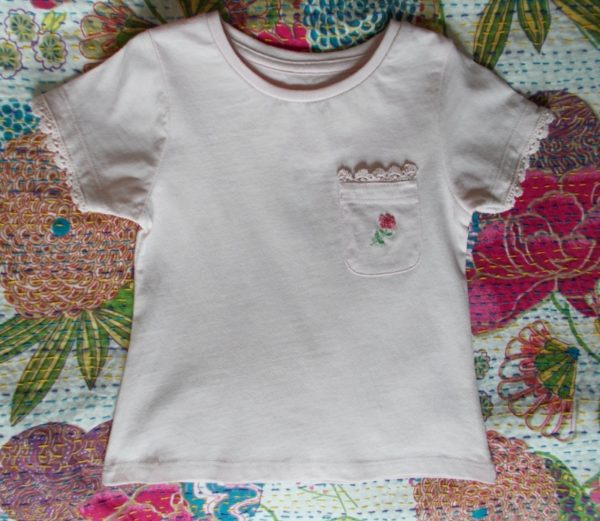
T shirt with rose (hand embroidered by Mary Addison)
In the Chantilly talk, however, Xavier gets full marks for not being upstaged by his little black kitten, who audibly, though invisibly knocks things over, darts back and forth across the back of a chair directly behind Xavier’s shoulder and looks far too interested in the earth in a potted plant but happily proves content just to pat the leaves in a one sided game of kitten table tennis. Xavier heroically resists any desire to turn round, twitches not so much an eyebrow and never veers even an iota from the task in hand. As a viewer, it was, however, impossible not to smile and even laugh out loud. (I have since learned the kitten is called Jadwiga.)
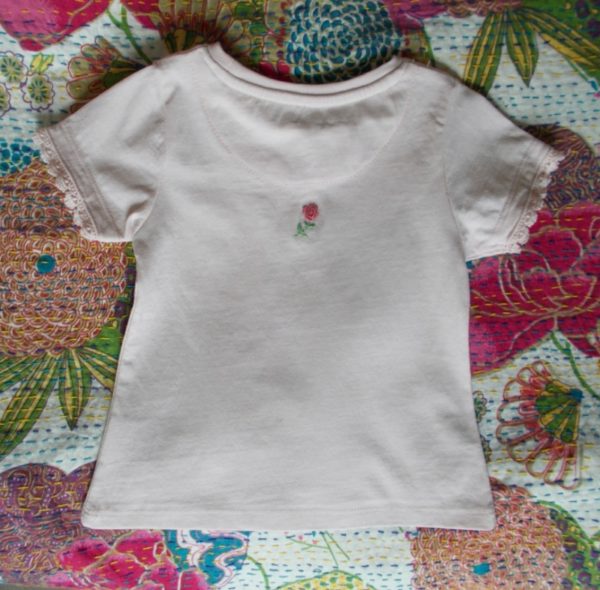
Back of T shirt with rose (hand embroidered by Mary Addison)
The podcast Waldy and Bendy’s Adventures in Art has also been very good, thought provoking and often took me right out of my art comfort zone. Waldemar Janusczcak, art historian and art critic for the Sunday Times and Bendor Grosvenor, historian, writer, former art dealer and televison presenter make good sparring partners with frequently opposing opinions about what constitutes good art. I love Waldemar, think he’s a very clever intellectual thinker who writes brilliantly and makes enlightening films about artist and art movements but I do hate his over-lavish introduction of Bendor at the start of every podcast – such things makes my toes curl and I have the feeling it makes Bendor’s too, but trooper that he is, he takes it in good part and gets on with the show . I also find the silly jingles unnecessary, but then I suppose it’s not really the likes of me they’re hoping to attract. Jingles apart, there’s much to be learned and even more to think about … and I may even have changed my mind about some things!
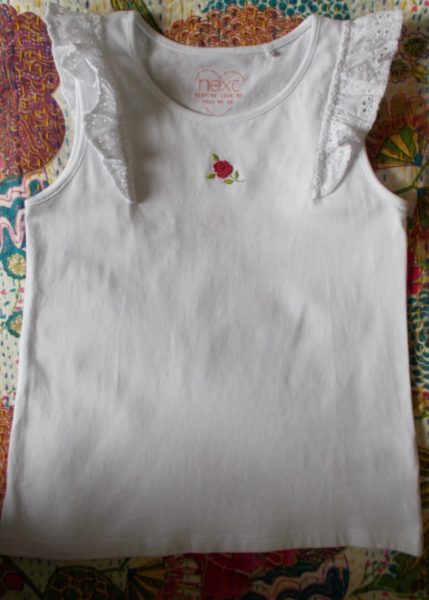
Sleeveless T shirt with rose (hand embroidered by Mary Addison)

rose on sleeveless T shirt (hand embroidered by Mary Addison)
Both the Frick team and Waldy and Bendy wound up their innovative online programmes recently as they go back to curating, reporting, gallery visiting and programme making. I hadn’t realised how much I looked forward to a new video/podcast until they announced they were finishing. Not many of British art institutions have grabbed my interest with their online presence. The National Gallery’s videos are of a very varied quality and one of the main problems for me seems to be the speaker’s delivery. I know it’s felt elocution lessons are a step too far nowadays but the odd lesson or two in clear speaking and proper delivery wouldn’t go amiss. Few speakers seem to be able to talk about art without verbal ticks, meaningless phrases (‘at this moment in time’, ‘in a manner of speaking’, ‘and so forth’ – yes, David Addison, with that last one I’m looking at you, though you are in general very good!). Many gabble, swoop, stress adjectives, and say things like ‘amazing’ far too often. However, Susan Foister, Deputy Director at the National Gallery I could listen to on Holbein until the cows come home. (See videos of The Ambassadors & Christina of Denmark.)She talks to her audience without notes or irritating mannerisms in a natural way just a step up from conversation, so though she’s speaking to a crowd it feels quite intimate. (There’s also a terrific Waldemar Janusczcak programme on Holbein on You Tube, which together with Susan Foister will tell you everything you need to know about Holbein’s Ambassadors.) Today, content is often overwhelmed by style but thankfully there are still outposts of excellence where the two happily work together to complement and even enhance each other.
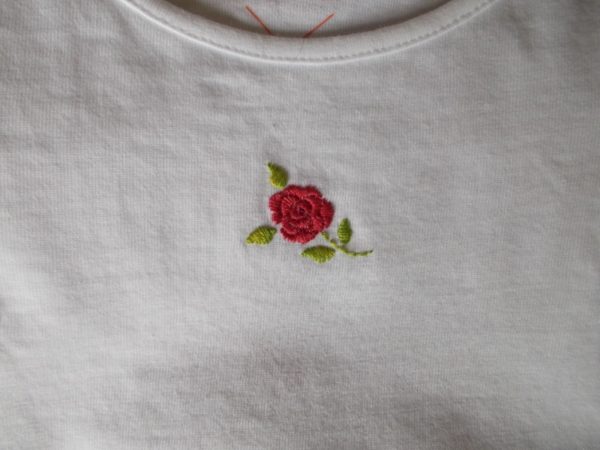
Little rose on back of sleeveless T shirt (hand embroidered by Mary Addison)
Closure has also come for Eric Carle, author and artist of children’s books, most notably ‘The Very Hungry Caterpillar’ who died recently aged 91. His most well known book was first published in 1969, has never been out of print and has sold more than 50 million copies – not bad for a book inspired by a hole punch!
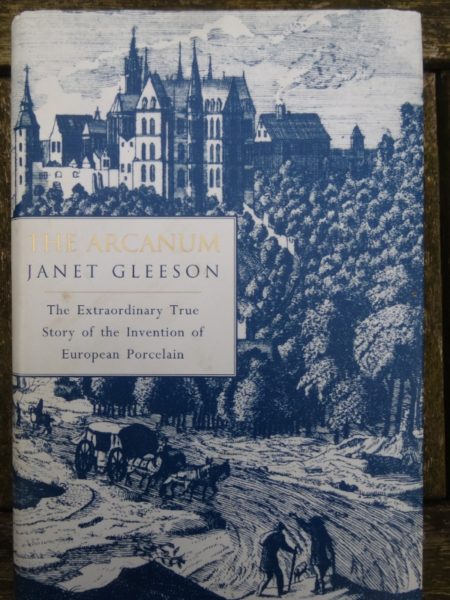
Janet Gleeson: The Arcanum
Footnote: talking about wisteria and honeysuckle remind me of the glorious Flanders and Swann song ‘Misalliance’ about the honeysuckle and bindweed falling in love. The honeysuckle winds clockwise while the bindweed twines anticlockwise. This made me wonder about the honeysuckle and wisteria which do their twining just outside my window and it seems it all depends which wisteria you have, for the Japanese wisteria (Wisteria floribunda) winds clockwise while the Chinese wisteria (Wisteria sinensis) winds anticlockwise, all because over geological time Japan has moved from the southern hemisphere to the northern. Plants in each hemisphere wind differently because of the effect of the earth’s rotation.
Honeysuckle, embroidery and all, was also the subject of my first ever blogpost.
This week, just a few tiny roses for T shirts for a 1 year old and a 4 year old.

